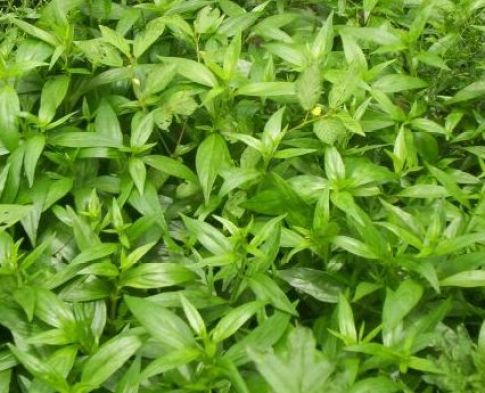
CHIRATA DRUG
- December 22, 2021
- Posted by Dr. Vaidya Karanvir Singh
- 0 Comment(s)
Table of Contents
DESCRIPTION
- Chirata is a popular ayurvedic herb
- it is growing in the sub-temperate regions of the Himalayas ranging
- It is known for its bitter characteristic.
- 3-4 feet in height.
- Flower – greenish-yellow flowers with a purplish tinge.
- It has powerful antipyretic, vermicidal, anti-inflammatory, antioxidant, hepatoprotective, laxative, hypoglycemic, and digestive properties.
- Chirata is extensively used against various infections like liver functions, enhancing appetite, boosting digestion, improving metabolism, treating skin diseases, facilitating weight loss and more disease.
BOTANICAL NAME – Swertia chirata
FAMILY – Gentianaceae
NAME IN DIFFERENT LANGUAGE
- Hindi name- Chriayata,
- English name- Chitretta
- Bengali name- Chirata, Chireta
- Tamil name- Nilavembu
- Punjab name- Charatin, Charaita
- Marathi name- Kiraita
- Gujarati name- Kariyatum
- Kannada name- Nilabevu, Kiratatikta
- Malayalam name- Nilavipaa, Nilaveppa
- Telugu name – Nilavemu
- Arabian name – Kasabujajareeraa
- Farsi name – Nainihaabandi
MEDICINAL PROPERTIES
- Rasa (taste) – Tikta (bitter)
- Guna (qualities) – Laghu (lightness), Rooksha (dryness)
- Vipaka- Katu – undergoes pungent taste conversion after digestion
- Virya- Sheeta – cold potency
- Effect on Tridosha – Balances Kapha and Pitta.
PART USED
Whole Plant is used for medicinal purpose but mostly root of Kiratatikta.
THERAPEUTIC USES
- Pittasranut – useful in bleeding disorders
- Shophahara – useful in infflammatory conditions
- Kasahara – relieves cough, cold
- Trushna – excessive thirst
- Jvarahara – useful in fever
- Maladhwamsi – useful in easing bowel movement
- Krumighni – useful in intestinal worm infestation
- Balakapriya – useful in pediatric complaints
- Sannipatari – useful in chronic and recurrent fever
- Nidrapaha – reduces sleep
- Mehopaha – useful in urinary tract disorders, diabetes
- Shwasahara – useful in asthma and wheezing
- Dahahara – useful to relieve burning sensation
- Kushtahara – useful in skin diseases
- Vranahara – induces quick wound healing.
- Its water decoction used in washing wounds to relieve infection.
USES OF CHIRATA
Chirata for Malaria
- Chirata is Ayurvedic herb used to manage the symptoms of Malaria.
- Malaria fever is known as Vishamajwara (intermittent fever) in ayurveda.
Clinical features of Vishamajwara
- Fever with irregular onset and remission,
- Excessive thirst,
- Heaviness in the body,
- Generalized body pain,
- Headache
- Rigors
- Chirata helps to reduce the symptoms of Vishamajvara because of its Jvaraghna (antipyretic) and antimalarial properties.
Chirata for Constipation
- Aggravated Vata and Pitta dosha caused constipation.
- Frequent consumption of junk food, excess intake of coffee or tea, late at night sleeping, stress and depression all these factors aggravate Vata and Pitta dosha leading to constipation.
- Chirata affluences bowel movement and helps in the removal of waste products from the body due to its Rechana (laxative) property.
Chirata for Worm infections
- In Ayurveda worms are called Krimi.
- They grow in intestine and cause harm.
- Chirata powder helps to manage worm infestation due to its Krimighna (anti-worm) property.
- It destroy the conditions that are ideal for the growth of these parasites and aids in their removal from the digestive tract.
Chirata for Appetite stimulant
- Chirata help to manage appetite.
- It works as an appetizer and helps improve digestion.
Chirata for Stomach upset
- Chirata might help to manage the symptoms of an Upset stomach like acidity or flatulence due to the presence of certain constituents.
- It improve digestion and strengthens the stomach.

Dr. Vaidya Karanvir Singh is the younger Vaidya in Chandigarh Ayurved & Panchakarma Centre. He is the fourth generation in his family who is practicing as a general consultant in Ayurved & Panchakarma treatment at Chandigarh. In his practice, he had treated more than 1 Lakh Plus patients worldwide.
Article by Dr. Karanvir Singh (M.D in AYURVEDA, PANCHAKARMA FAGE) and reviewed by Vaidya Jagjit Singh (B.A.M.S)

